Smokey Skies continued, New PZT, Wolf 359 Parallax
Posted: 12 June 2020
Wednesday morning, 10 June 2020, smoke from the Bighorn and the Tortolita fires was still obvious in the southwestern sky. This photo looking towards Kitt Peak National Observatory (hidden by smoke) shows Cassiopeia Observatory, the waning gibbous Moon, and the smoke.

By mid-afternoon the smoke plume from the Bighorn Fire (about 15 miles south of Oracle) was rather extensive, as seen in this wide-angle photo (S-SW-W).
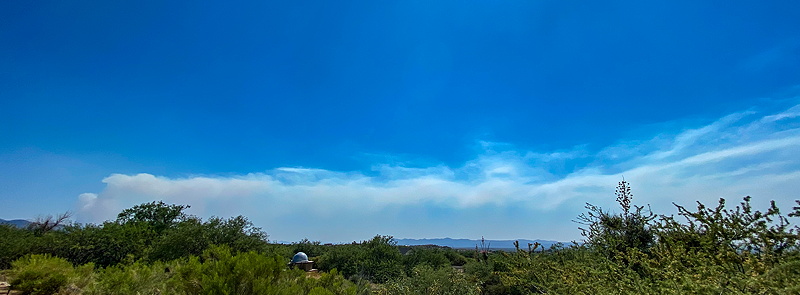
As sunset approached the sky had a lot of smoke, as seen in this photo.
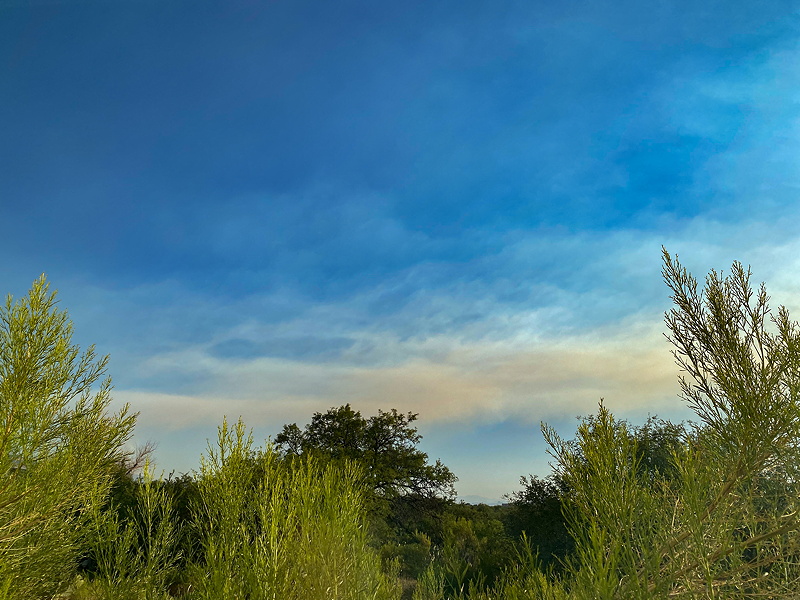
The GOES-East satellite captured the smoke plume from the Bighorn Fire (and several other fires).
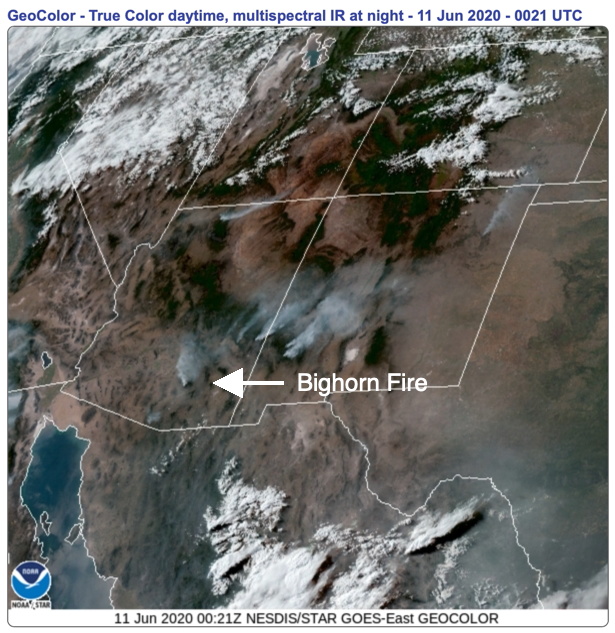
Click or tap on image to view short video
Due to the smokey sky I did not open the observatory Wednesday night.
I was notified that my image of NGC4568 (one of the Siamese Twins galaxies) that I did on the previous session had captured Supernova SN2020fqv, discovered 31 March 2020. Thanks Mike! I had heard about this supernova back then but forgot about it. I plan to image it again on the next session.
Thursday morning, 11 June, dawned clear with some smoke visible. The Bighorn Fire, 4,769 acres and 10% contained, continues to be a dangerous fire burning in the Catalina Mountains south of Oracle. No threat here but it is a significant threat to the foothill communities north of Tucson. The Tortolita Fire (about 20 miles west of Oracle), 3140 acres, was finally 100% contained.
11 June 2020 was the 15 anniversary of my 5th visit to "Oracle Observatory".
Thursday morning the local contractor who is making my replacement POD Zenith Table (PZT) came to do some initial fabrication. A few minutes before they arrived our local Federal Government electric company had a power outage that lasted for 2.5 hours. The observatory still had power from the Tesla Powerwall (installed a year ago), but the contractor decided to go back to his shop to get a gas-powered electrical generator for his arc welder. I will post a full report on the new PZT once it is completed, but for now here is a teaser (with smoke from the Bighorn Fire in the background).
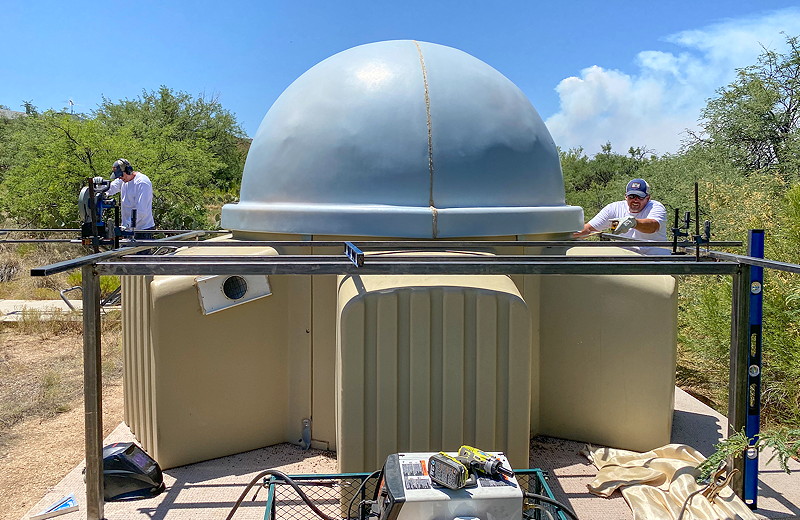
Due to the entire sky being smoke-filled beginning mid-afternoon I did not go to the observatory Thursday night.
On 23 April 2020, the New Horizons spacecraft, 4.3 billion miles from the Earth at the time, took an image of the nearby star Wolf 359 (7.9 light-years from the Earth). I, among many others, also imaged Wolf 359 that night.
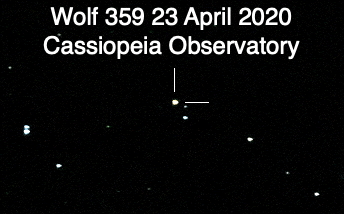
The New Horizons image was just released. Due to the long distance (called a "baseline") between the spacecraft and Cassiopeia Observatory, the parallax (image shift) of this close star is very apparent. The comparison images easily show the large shift of Wolf 359. (Unfortunately, I was not able to get a precise image scale and star registration.)
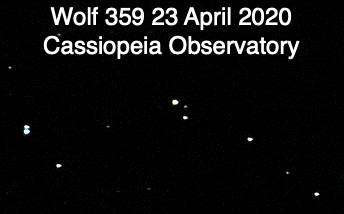
Comments are welcome using Email. Twitter users can use the button below to tweet this report to their followers. Thanks.
Cassiopeia Observatory Home Page
Copyright ©2020 Michael L. Weasner / mweasner@me.com
URL = http://www.weasner.com/co/Reports/2020/06/12/index.html

